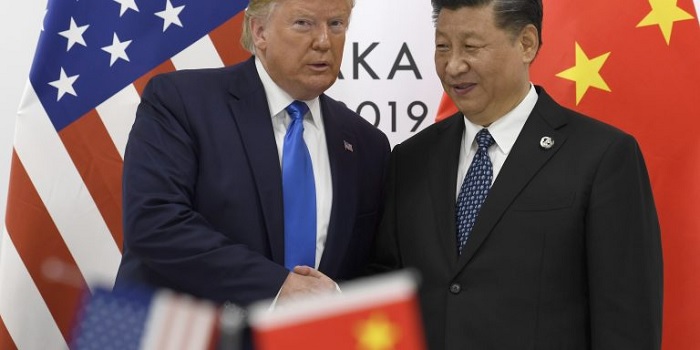
Phase one trade negotiations between the United States and China recently started at the end of August amid heightened tensions between Washington and Beijing.
U.S.-China trade negotiations are an effort to lower tariffs and promote freer trade between the two geopolitical heavyweights.
The prognosis for the deal appears optimistic, although its passage could be hampered by the ongoing missile launches from the Chinese mainland into the South China Sea.
One major uncertainty surrounding the viability of trade talks is what happens with the upcoming U.S. presidential election in November 2020.
Phase one U.S. – China trade talks, which have long assumed a zero-sum mentality, began last week in Beijing. The talks commenced with China promising to purchase more U.S. agricultural products, including pork and soybeans, America’s largest export to China. In return, Washington’s chief negotiator, Robert Lighthizer, has promised to ease restrictions surrounding industrial policy, decreasing tariffs on $120 billion goods from the Chinese manufacturing and technology sector. The full benefits of the deal are expected to materialize over several years, with a further expected $250 billion of tariff cuts on Chinese technology used in U.S. manufacturing and Chinese purchases of U.S. exports, which many hope will smooth relations between the two nations.
The deal has important implications for China’s local and regional economies. Previously, growth targets motivated local governments, spurring reform and development. However, the country is slowly shifting away from an export-based model and in response to surplus production, local governments have shifted to a ‘quality over quantity’ approach. Xi Jinping’s economic leadership team is currently drafting a five-year plan starting in 2021, and numerical production targets are an issue at the center of the debate. A key part of the plan, whether Beijing continues to do away with numerical production targets at the local level, is a drastic change nudging the planned economy more toward free markets.
China’s recent missile launch in the South China Sea is a flex of its military muscle. The missiles included a DF-21 and DF-26, deployed between Hainan province and the Parcel Islands. This show of force could be a not-so-subtle hint that China remains unhappy with the status quo in its relationship with the United States more broadly. President Trump has publically antagonized Beijing by blaming the COVID-19 pandemic on China, disparaging recent moves in Hong Kong and critiquing TikTok’s potential sale to a Chinese company. Beijing hopes for U.S. sanctions relief on ByteDance, the parent company of TikTok, and Huawei, the 5G giant. Additionally, China seeks to override current limits on an anti-monopoly international regulation to create state-owned competitors for robotics and other technology industries. This comes against the backdrop of slowing Chinese growth, with the first three months of 2020 bringing a 6.8% decline in economic output, the first slowdown since 1992. To promote growth even in challenging times, China champions reforming trade practices as the center of many of its foreign relations, including with the United States.
The Trump administration’s focus on increasing America’s exports has actually helped to push forward the U.S.–China trade deal despite concerns about Chinese influence through TikTok and Huawei. With uncertainty over the upcoming November 2020 U.S. presidential election, potential challenges abound. Under a Biden presidency, shifting White House priorities could delegate negotiation of the trade deal to the Department of Commerce. Such a shift might not stall the deal completely, but could allow the Department of Commerce to add Chinese companies to the Entity List that restricts U.S. companies from doing business with them, and allow the State Department to leverage Magnitsky Act sanctions on companies involved in the persecution of Uighur Muslims in Xinjiang. The possible scale of such measures would hobble Chinese businesses. Although the 2021 five year plan suggests that China is doing away with many planned measures in local economies, reaching national level economic targets will remain important, especially in the face of COVID-19 recovery. Experts expect tensions to persist during the talks, and it remains to be seen if any side will achieve a major economic victory.
 Eurasia Press & News
Eurasia Press & News

